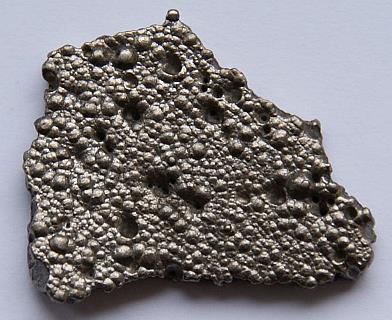Yesterday I mentioned that cobalt may be another important factor for thyroid. This paper is what set me off on that track.
It is interesting to consider that vitamin B12 (which is called cobalamin with various prefixes) has an atom of cobalt at its heart. I wonder if there is a connection?
Endocrinol Metab (Seoul). 2014 Sep;29(3):307-11. doi: 10.3803/EnM.2014.29.3.307. Epub 2014 Sep 25.
The Association between Cobalt Deficiency and Endemic Goiter in School-Aged Children.
Sanjari M1, Gholamhoseinian A2, Nakhaee A3.
Author information
Abstract
BACKGROUND:
In Iran, an iodine deficiency control program was initiated in 1989 by iodizing salt. Despite this program, goiters have remained an endemic condition in most parts of Iran. Thus, it is possible that other factors aside from iodine deficiency may contribute to endemic goiter. The aim of this study was to investigate the association between cobalt deficiency and endemic goiter in a region of Iran with a high prevalence of goiter.
METHODS:
A cross-sectional study was conducted among school children aged 9 to 11 years in the city of Kerman, Iran. In the first phase of the study, a multistage, proportional-to-size, cluster sampling method was used to screen 5,380 out of 29,787 students. After the screening phase, 170 students (130 goitrous and 40 nongoitrous) were randomly selected, and serum and urine specimens were obtained. We measured thyroid function, serum cobalt level, and urinary iodine excretion. Univariate and multiple logistic regression analyses were performed.
RESULTS:
The prevalence of grade 2 goiters was 34.8% (95% confidence interval [CI], 31.5 to 42.5), with both sexes being equally affected. The weight and body mass index of goitrous subjects was significantly lower (P<0.001) than those of nongoitrous subjects. The serum cobalt levels were lower in goitrous subjects than in nongoitrous subjects (4.4±2.9 µg/L vs. 6.4±2.7 µg/L). The urinary iodine levels were also lower in goitrous subjects than in nongoitrous subjects (198.3±108.3 µg/L vs. 270.2±91.1 µg/L). Multiple regression analysis showed that only cobalt deficiency, not iodine deficiency, significantly contributed to the presence of goiter (odds ratio, 0.78; 95% CI, 0.61 to 0.99; P=0.042).
CONCLUSION:
Cobalt deficiency may be an important independent predicator for goiter in endemic regions, especially areas in which goiters persist despite salt iodization programs.
KEYWORDS:
Cobalt; Goiter; Iodine deficiency; Thyroid; Urine Iodine
PMID: 25309789 [PubMed] Free full text
ncbi.nlm.nih.gov/pubmed/253...
The full paper is available.
Rod
